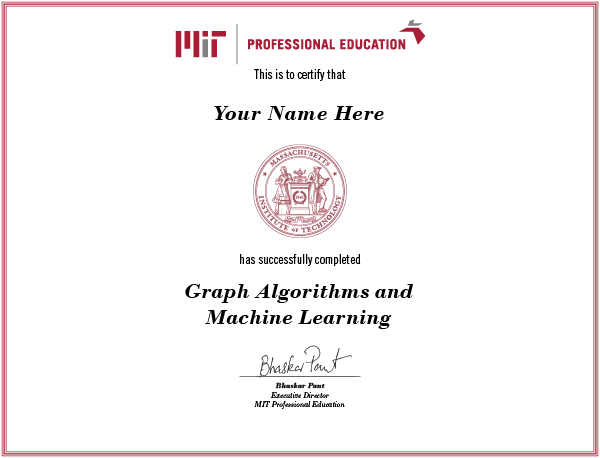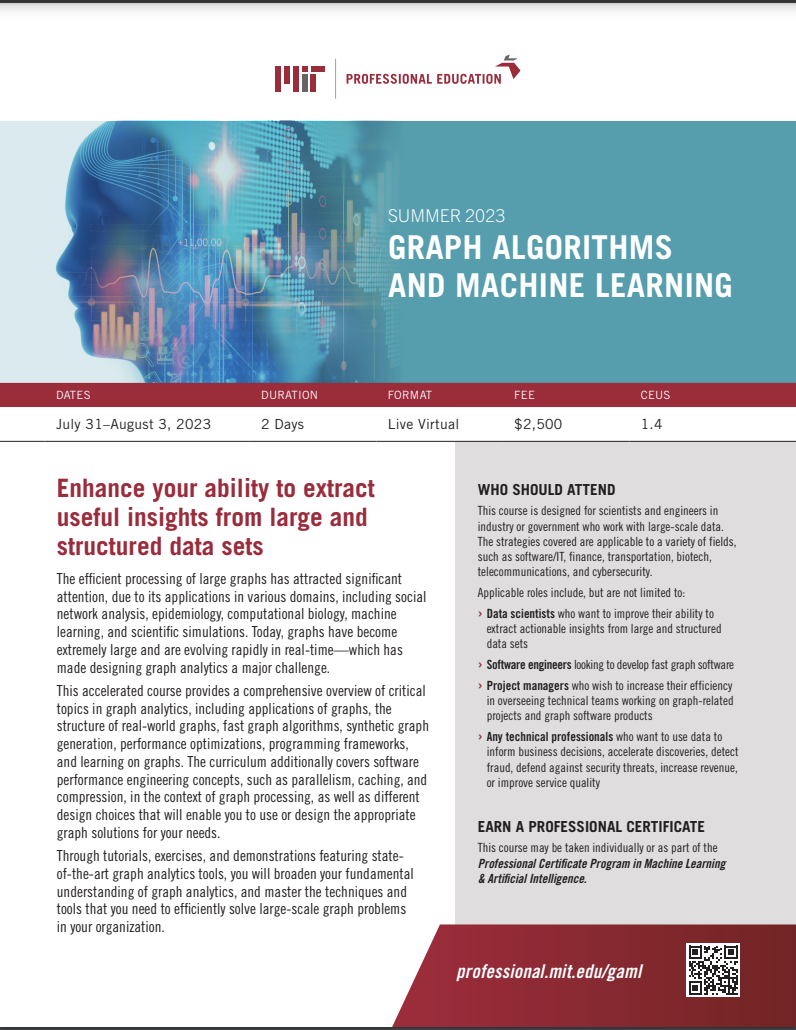Graphs have long been a fundamental way to model relationships in data across industries as diverse as IT, finance, transportation, telecommunications, and cybersecurity. Today, they are increasingly used in machine learning pipelines—enabling clustering for classification tasks, improving recommendation systems, ranking search results, and more. But as the sheer quantity of collected data has grown, so has the complexity of mapping these connections.
As a result, the efficient processing of large graphs has attracted significant attention, due to its applications in various domains, including social network analysis, epidemiology, computational biology, machine learning, and scientific simulations. Today, graphs have become extremely large and are evolving rapidly in real-time — which has made designing graph analytics a major challenge.
This accelerated course provides a comprehensive overview of critical topics in graph analytics, including applications of graphs, the structure of real-world graphs, fast graph algorithms, synthetic graph generation, performance optimizations, programming frameworks, and learning on graphs. The curriculum additionally covers software performance engineering concepts, such as parallelism, caching, and compression, in the context of graph processing, as well as different design choices that will enable you to use or design the appropriate graph solutions for your needs.
Through tutorials, exercises, and demonstrations featuring state-of-the-art graph analytics tools, you will broaden your fundamental understanding of graph analytics, and master the techniques and tools that you need to efficiently solve large-scale graph problems in your organization.
Certificate of Completion from MIT Professional Education

Links & Resources
Modeling relationships to solve complex problems efficiently, MIT News, October 4, 2024




